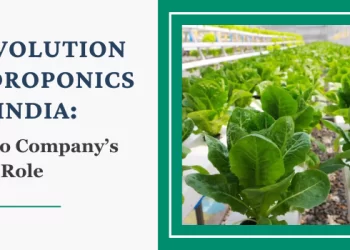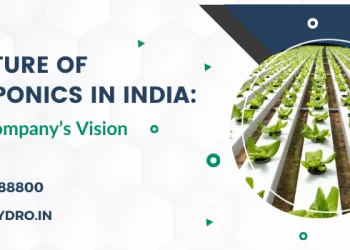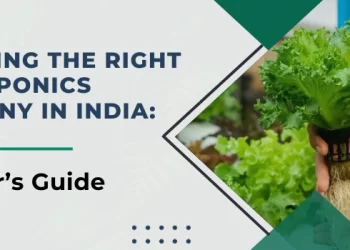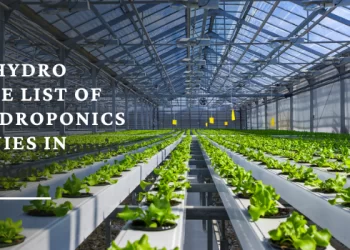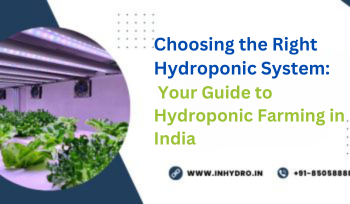
The Best Way to Set Up a Hydroponic Dutch Bucket
Are you looking for a way to grow plants without soil? Hydroponic Dutch Buckets are a great solution. This method of hydroponic gardening can be used to grow a variety of plants in a relatively small space. It is an easy and efficient way to set up a hydroponic grow bucket, and it requires minimal maintenance. In this blog post, we’ll explain the best way to set up a hydroponic Dutch Bucket and provide tips for getting the most out of your hydroponic grow bucket.
What You Will Need
Setting up a Dutch Bucket hydroponic system requires some supplies, including buckets, an air pump, an air stone, a timer, and a reservoir.
The buckets will house the plants in your system. Depending on the size of your system, you’ll need 1-5 buckets. For each bucket, you’ll also need a net pot and lid. The net pot holds the plant and its roots, while the lid prevents debris from getting into the bucket. You’ll also need a grommet for each lid that seals the hole for the airline.
An air pump is necessary to keep your system running. The air pump provides oxygen for the plant’s roots and helps circulate water in the buckets. You will also need an air stone to diffuse the air from the pump, as well as a timer to control how long the pump runs.
Finally, you will need a reservoir for your system. This is where the nutrient-rich water for your plants will be stored. The size of your reservoir will depend on how large your system is and how often you plan to water your plants.
Setting Up Your Dutch Bucket
Once you have all the components you need, it’s time to set up your Hydroponic Dutch bucket system. Here are the steps to follow:
1. Place the bucket in a stable location. The Dutch bucket should be placed somewhere that is protected from direct sunlight and away from any sources of heat. If necessary, you can purchase a stand for the buckets to make them easier to access.
2. Fill the bucket with nutrient-rich hydroponic solution. This can be prepared in-house or purchased from a garden center. Be sure to check the pH levels and adjust accordingly before adding the solution to the bucket.
3. Add your plants to the buckets. Make sure to place them evenly around the bucket so that each one has access to the same amount of nutrients.
4. Install an irrigation system. You can use a drip system, ebb and flow, or a hand-watering system depending on your needs. The irrigation system should be connected to a timer so that the plants can get their required amounts of water and nutrients at regular intervals.
5. Monitor the system regularly. Check on the buckets at least once a week to ensure they are functioning properly. Monitor the pH levels of the nutrient solution as well as the health of the plants. Make adjustments if necessary.
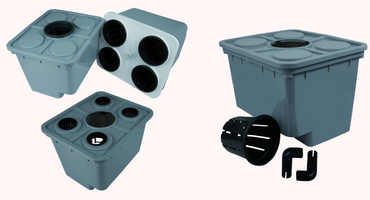
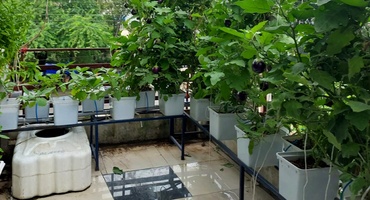
Tips for Success
1. Ensure your Dutch Bucket is properly sealed – This is essential to stop any water loss. Make sure that the lid is tightly secured and all connections are secure.
2. Choose the right media for your plants – Different types of plants require different media. Depending on the type of crop you’re growing, you will need to choose the appropriate type of media for each bucket.
3. Monitor the pH levels – To ensure that the plants are getting enough nutrients, monitor the pH levels in the water. The ideal pH level for most hydroponic systems is between 5.5 and 6.5.
4. Check the water levels regularly – You should check the water levels in the Dutch Buckets daily to ensure they’re not running low or overflowing. You should also check the buckets weekly to ensure they’re not becoming contaminated by any algae growth or debris.
5. Change the nutrient solution regularly – You should change the nutrient solution in the Dutch Buckets every 2-4 weeks. This will ensure that the plants are getting fresh nutrients, and prevent the build up of any harmful bacteria in the system.
6. Maintain a proper light cycle – It’s important to provide your plants with a proper light cycle for optimal growth. Most plants need at least 8-10 hours of direct sunlight per day, so make sure to place your Dutch Buckets in an area that receives plenty of sun.
7. Keep an eye on pests – When growing plants indoors, it’s important to watch out for any pests that may be attracted to your hydroponic system. Inspect your plants regularly for any signs of infestation, and take steps to prevent any pests from taking up residence in your Dutch Buckets.
How Does a Dutch Bucket Hydroponic System Work?
A Dutch bucket hydroponic system is an effective way to grow plants without the need for soil. This type of system works by using buckets that contain a growing medium and nutrient solution. The buckets are connected by tubing which allows water and nutrients to be circulated throughout the system.
The Dutch bucket system works by submerging the roots of the plants in a nutrient-rich solution. The solution is usually a combination of water, mineral salts, and other organic compounds. The nutrients are absorbed by the plants through their root system and are transported to the foliage, flowers, and fruits of the plants.
The Dutch bucket system also utilizes an overflow pipe which allows excess nutrient solution to be recirculated back into the system. This helps to maintain a consistent level of nutrients throughout the system. Additionally, air stones can be added to the buckets to provide oxygen for the roots of the plants.
The Dutch bucket hydroponic system is a great way to produce healthy, high-quality plants with minimal effort. It is also relatively inexpensive and easy to set up. With proper maintenance, this system can produce an abundant harvest in a short amount of time.
Which Plants to grow?
When it comes to choosing the right plants to grow in your Dutch bucket hydroponic system, you’ll want to consider how much space each type of plant requires. Generally, a good rule of thumb is that smaller plants tend to do best in these systems. Tomatoes, peppers, cucumbers, strawberries, lettuce, herbs, and other small-to-medium-sized vegetables are all excellent options for growing in a Dutch bucket system.
Of course, there are some things to keep in mind when selecting plants for your hydroponic system. Make sure you choose varieties that are resistant to diseases and insects, and that require less water and fertilizer than other types of plants. You should also research the ideal soil pH levels for the plants you’re looking to grow so that you can adjust the nutrient solution accordingly. Finally, make sure to select plants that will thrive in the environment you provide for them.
When planting your Dutch bucket Hydroponic System, make sure you space out the plants as evenly as possible so that they all get enough light, water, and nutrients. Depending on the type of plants you’re growing, you may need to install additional lighting or air pumps to ensure they receive the necessary elements for growth. Additionally, be sure to check your system regularly for any problems that may arise and to adjust your nutrient solution as needed. With proper care and attention, you’ll be able to enjoy a bountiful harvest of delicious fruits and vegetables from your Dutch bucket hydroponic system.
Thank you for your interest in InHydro! Whether you have questions about our hydroponics products, services and solutions or want to learn more about hydroponics, we’re here to help. Please feel free to reach out to us using the contact information below, and one of our friendly team members will be in touch with you shortly.

The Best Way to Set Up a Hydroponic Dutch Bucket
Are you looking for a way to grow plants without soil? Hydroponic Dutch Buckets are a great solution. This method of hydroponic gardening can be used to grow a variety of plants in a relatively small space. It is an easy and efficient way to set up a hydroponic grow bucket, and it requires minimal maintenance. In this blog post, we’ll explain the best way to set up a hydroponic Dutch Bucket and provide tips for getting the most out of your hydroponic grow bucket.
What You Will Need
Setting up a Dutch Bucket hydroponic system requires some supplies, including buckets, an air pump, an air stone, a timer, and a reservoir.
The buckets will house the plants in your system. Depending on the size of your system, you’ll need 1-5 buckets. For each bucket, you’ll also need a net pot and lid. The net pot holds the plant and its roots, while the lid prevents debris from getting into the bucket. You’ll also need a grommet for each lid that seals the hole for the airline.
An air pump is necessary to keep your system running. The air pump provides oxygen for the plant’s roots and helps circulate water in the buckets. You will also need an air stone to diffuse the air from the pump, as well as a timer to control how long the pump runs.
Finally, you will need a reservoir for your system. This is where the nutrient-rich water for your plants will be stored. The size of your reservoir will depend on how large your system is and how often you plan to water your plants.
Setting Up Your Dutch Bucket
Once you have all the components you need, it’s time to set up your Hydroponic Dutch bucket system. Here are the steps to follow:
1. Place the bucket in a stable location. The Dutch bucket should be placed somewhere that is protected from direct sunlight and away from any sources of heat. If necessary, you can purchase a stand for the buckets to make them easier to access.
2. Fill the bucket with nutrient-rich hydroponic solution. This can be prepared in-house or purchased from a garden center. Be sure to check the pH levels and adjust accordingly before adding the solution to the bucket.
3. Add your plants to the buckets. Make sure to place them evenly around the bucket so that each one has access to the same amount of nutrients.
4. Install an irrigation system. You can use a drip system, ebb and flow, or a hand-watering system depending on your needs. The irrigation system should be connected to a timer so that the plants can get their required amounts of water and nutrients at regular intervals.
5. Monitor the system regularly. Check on the buckets at least once a week to ensure they are functioning properly. Monitor the pH levels of the nutrient solution as well as the health of the plants. Make adjustments if necessary.

Tips for Success
1. Ensure your Dutch Bucket is properly sealed – This is essential to stop any water loss. Make sure that the lid is tightly secured and all connections are secure.
2. Choose the right media for your plants – Different types of plants require different media. Depending on the type of crop you’re growing, you will need to choose the appropriate type of media for each bucket.
3. Monitor the pH levels – To ensure that the plants are getting enough nutrients, monitor the pH levels in the water. The ideal pH level for most hydroponic systems is between 5.5 and 6.5.
4. Check the water levels regularly – You should check the water levels in the Dutch Buckets daily to ensure they’re not running low or overflowing. You should also check the buckets weekly to ensure they’re not becoming contaminated by any algae growth or debris.
5. Change the nutrient solution regularly – You should change the nutrient solution in the Dutch Buckets every 2-4 weeks. This will ensure that the plants are getting fresh nutrients, and prevent the build up of any harmful bacteria in the system.
6. Maintain a proper light cycle – It’s important to provide your plants with a proper light cycle for optimal growth. Most plants need at least 8-10 hours of direct sunlight per day, so make sure to place your Dutch Buckets in an area that receives plenty of sun.
7. Keep an eye on pests – When growing plants indoors, it’s important to watch out for any pests that may be attracted to your hydroponic system. Inspect your plants regularly for any signs of infestation, and take steps to prevent any pests from taking up residence in your Dutch Buckets.
How Does a Dutch Bucket Hydroponic System Work?
A Dutch bucket hydroponic system is an effective way to grow plants without the need for soil. This type of system works by using buckets that contain a growing medium and nutrient solution. The buckets are connected by tubing which allows water and nutrients to be circulated throughout the system.
The Dutch bucket system works by submerging the roots of the plants in a nutrient-rich solution. The solution is usually a combination of water, mineral salts, and other organic compounds. The nutrients are absorbed by the plants through their root system and are transported to the foliage, flowers, and fruits of the plants.
The Dutch bucket system also utilizes an overflow pipe which allows excess nutrient solution to be recirculated back into the system. This helps to maintain a consistent level of nutrients throughout the system. Additionally, air stones can be added to the buckets to provide oxygen for the roots of the plants.
The Dutch bucket hydroponic system is a great way to produce healthy, high-quality plants with minimal effort. It is also relatively inexpensive and easy to set up. With proper maintenance, this system can produce an abundant harvest in a short amount of time.
Which Plants to grow?
When it comes to choosing the right plants to grow in your Dutch bucket hydroponic system, you’ll want to consider how much space each type of plant requires. Generally, a good rule of thumb is that smaller plants tend to do best in these systems. Tomatoes, peppers, cucumbers, strawberries, lettuce, herbs, and other small-to-medium-sized vegetables are all excellent options for growing in a Dutch bucket system.
Of course, there are some things to keep in mind when selecting plants for your hydroponic system. Make sure you choose varieties that are resistant to diseases and insects, and that require less water and fertilizer than other types of plants. You should also research the ideal soil pH levels for the plants you’re looking to grow so that you can adjust the nutrient solution accordingly. Finally, make sure to select plants that will thrive in the environment you provide for them.
When planting your Dutch bucket Hydroponic System, make sure you space out the plants as evenly as possible so that they all get enough light, water, and nutrients. Depending on the type of plants you’re growing, you may need to install additional lighting or air pumps to ensure they receive the necessary elements for growth. Additionally, be sure to check your system regularly for any problems that may arise and to adjust your nutrient solution as needed. With proper care and attention, you’ll be able to enjoy a bountiful harvest of delicious fruits and vegetables from your Dutch bucket hydroponic system.
Contact us at the Consulting WP office nearest to you or submit a business inquiry online.
Related Post
-
The Evolution of Hydroponics in India: InHydro Company’s Role
The Evolution of Hydroponics in India: InHydro Company’s Role India, a country with a rich agricultural heritage, is now witnessing a revolution in farming methods – hydroponics. This innovative approach to cultivation has the potential to reshape the Indian agricultural landscape. At the forefront of this evolution is InHydro, a pioneering hydroponics company in India. In this blog, we’ll explore the remarkable journey of hydroponics in India and the pivotal role played by InHydro in this transformation. The Early Stages: Hydroponics in India The concept of hydroponics, which involves growing plants without soil, was relatively unknown in India until a
11/10/2023
Read more -
The Future of Hydroponics in India: InHydro Company’s Vision
The Future of Hydroponics in India: InHydro Company’s Vision As the world grapples with increasing food demands, climate change, and limited arable land, the future of agriculture is undergoing a paradigm shift. In India, where agriculture is a cornerstone of the economy, hydroponics is emerging as a game-changer. InHydro, a pioneering hydroponics company in India, is at the forefront of this agricultural revolution. Let’s explore InHydro’s vision for the future of hydroponics in India. Agriculture Reinvented: InHydro’s Commitment InHydro envisions a future where agriculture in India is not constrained by traditional farming methods and limitations. Their commitment is to reinvent
11/10/2023
Read more -
Choosing the Right Hydroponics Company in India: A Buyer’s Guide
Choosing the Right Hydroponics Company in India: A Buyer’s Guide In the ever-evolving world of agriculture, hydroponics has emerged as a revolutionary method of cultivating crops. Hydroponic farming offers numerous advantages, from efficient space utilization to water conservation and year-round crop production. If you’re considering venturing into hydroponics in India, you’re embarking on a journey towards sustainable and high-yield farming. However, choosing the right hydroponics company is crucial to your success. In this buyer’s guide, we’ll explore essential factors to consider when selecting the best hydroponics company in India. Expertise in Hydroponic Farming First and foremost, look for a hydroponics
11/10/2023
Read more -
Why Inhydro tops the list of best hydroponics companies in India
Why Inhydro tops the list of best hydroponics companies in India In the ever-evolving landscape of agriculture, where sustainability and innovation are key, InHydro stands tall as the leading hydroponics company in India, redefining modern farming and setting standards for the industry. With a passion for growth and a commitment to providing holistic solutions, InHydro has emerged as the best hydroponics company in India, making it the go-to choice for farmers and agripreneurs alike. Cost-Effective Hydroponic Farming Solutions InHydro is committed to making hydroponics accessible to all. Their cost-effective solutions make setting up a hydroponic farm in India a reality
11/10/2023
Read more -
The Rise of Hydroponics for Sustainable Agriculture
Hydroponics is a modern and innovative method of growing plants without the need for soil. Instead, plants are grown in nutrient-rich water solutions, allowing them to absorb all the essential nutrients they need for healthy growth.
12/09/2023
Read more -
Choosing the Right Hydroponic System: Your Guide to Hydroponic Farming in India
Hydroponics is a modern and innovative method of growing plants without the need for soil. Instead, plants are grown in nutrient-rich water solutions, allowing them to absorb all the essential nutrients they need for healthy growth.
12/09/2023
Read more -
Introduction to Hydroponics: A Sustainable Farming Approach in India
Hydroponics is a modern and innovative method of growing plants without the need for soil. Instead, plants are grown in nutrient-rich water solutions, allowing them to absorb all the essential nutrients they need for healthy growth.
12/09/2023
Read more

Mr. Sandeep & Mrs. Asha
I am passionate about farming and want to do it as a hobby. I was searching for the right vendor I visited InHydro and was amazed to see they are manufacturing & building products using HDPE material. I bought 64 Plants NFT Systems for leafy and herbs along with 50 Dutch bucket systems for vine crops. Thank you Mr. Awneesh for your guidance.

Mr. Harshit Singhal
I am Harshit. This workshop refreshed me. It was meticulously planned. Each session had a good insight. Thanks to Mr. Awneesh Kumar and his team to have put up a good show. Keep spreading the knowledge sir.
-
Company Title #1
Item content. Click the edit button to change this text.
Company overview
Consulting WP is a global consulting powerhouse. We began our operations a few decades ago and have grown due to excellent relationships with our clients. We started out small, with just a few people and a small office, but today we have offices in multiple countries with hundreds of people working inside them.
We achieved our success because of how successfully we integrate with our clients. One complaint many people have about consultants is that they can be disruptive. Employees fear outside consultants coming in and destroying the workflow. Our clients face no such issues.
Consulting WP continues to grow ever day thanks to the confidence our clients have in us. We cover many industries such as financial, energy, business services, consumer products.
Our mission
Our renowned coaching programs will allow you to:
- Work fewer hours — and make more money
- Attract and retain quality, high-paying customers
- Manage your time so you’ll get more done in less time
- Hone sharp leadership skills to manage your team
- Cut expenses without sacrificing quality
- Automate your business, so you can leave for days, weeks, or even months at a time
How we work

Thank you for your interest in InHydro! Whether you have questions about our Hydroponics products, services & solutions or want to learn more about hydroponics, we’re here to help. Please feel free to reach out to us using the contact information below, and one of our friendly team members will be in touch with you shortly.
I am passionate about farming and want to do it as a hobby. I was searching for the right vendor I visited InHydro and was amazed to see they are manufacturing & building products using HDPE material. I bought 64 Plants NFT Systems for leafy and herbs along with 50 Dutch bucket systems for vine crops. Thank you Mr. Awneesh for your guidance.


